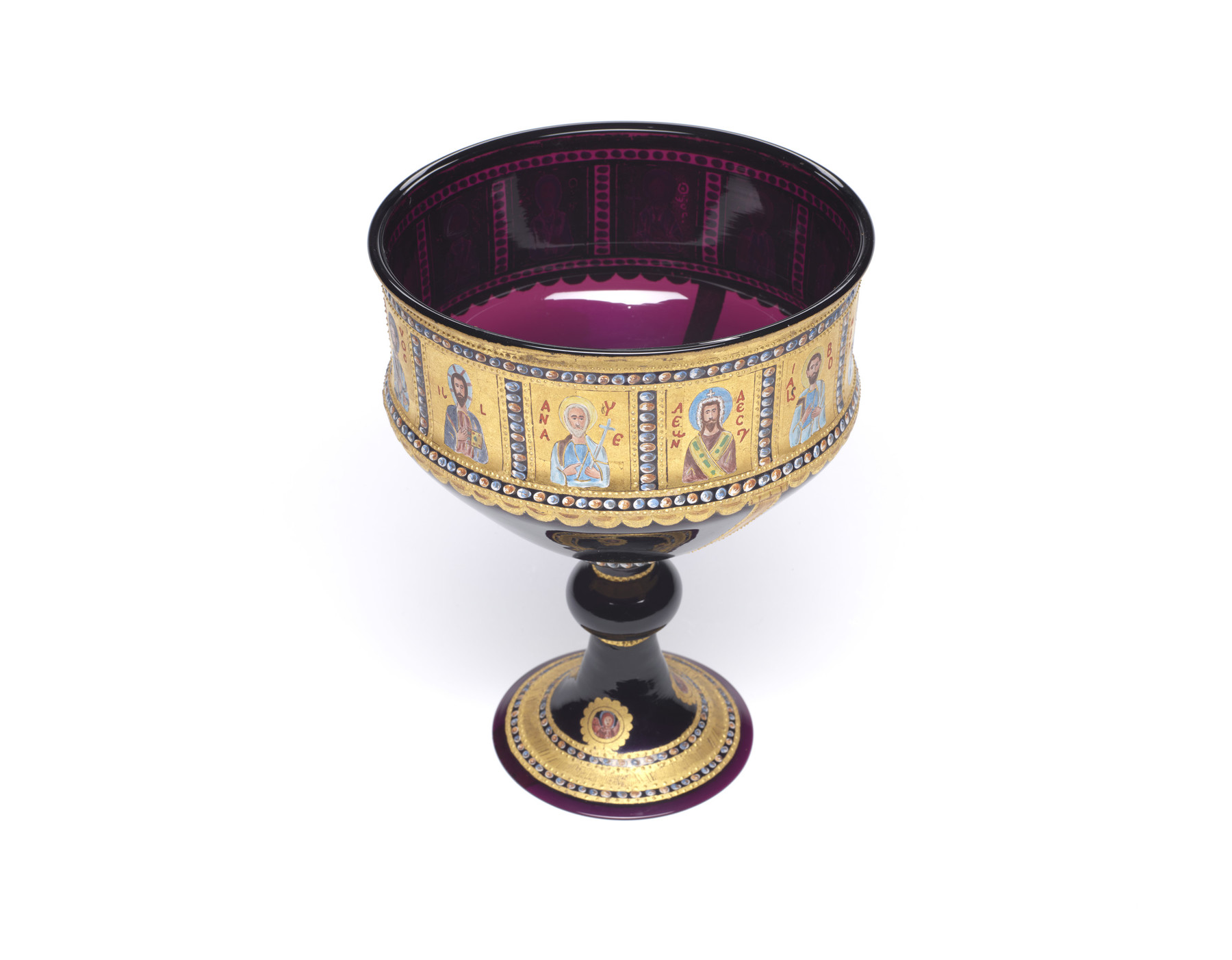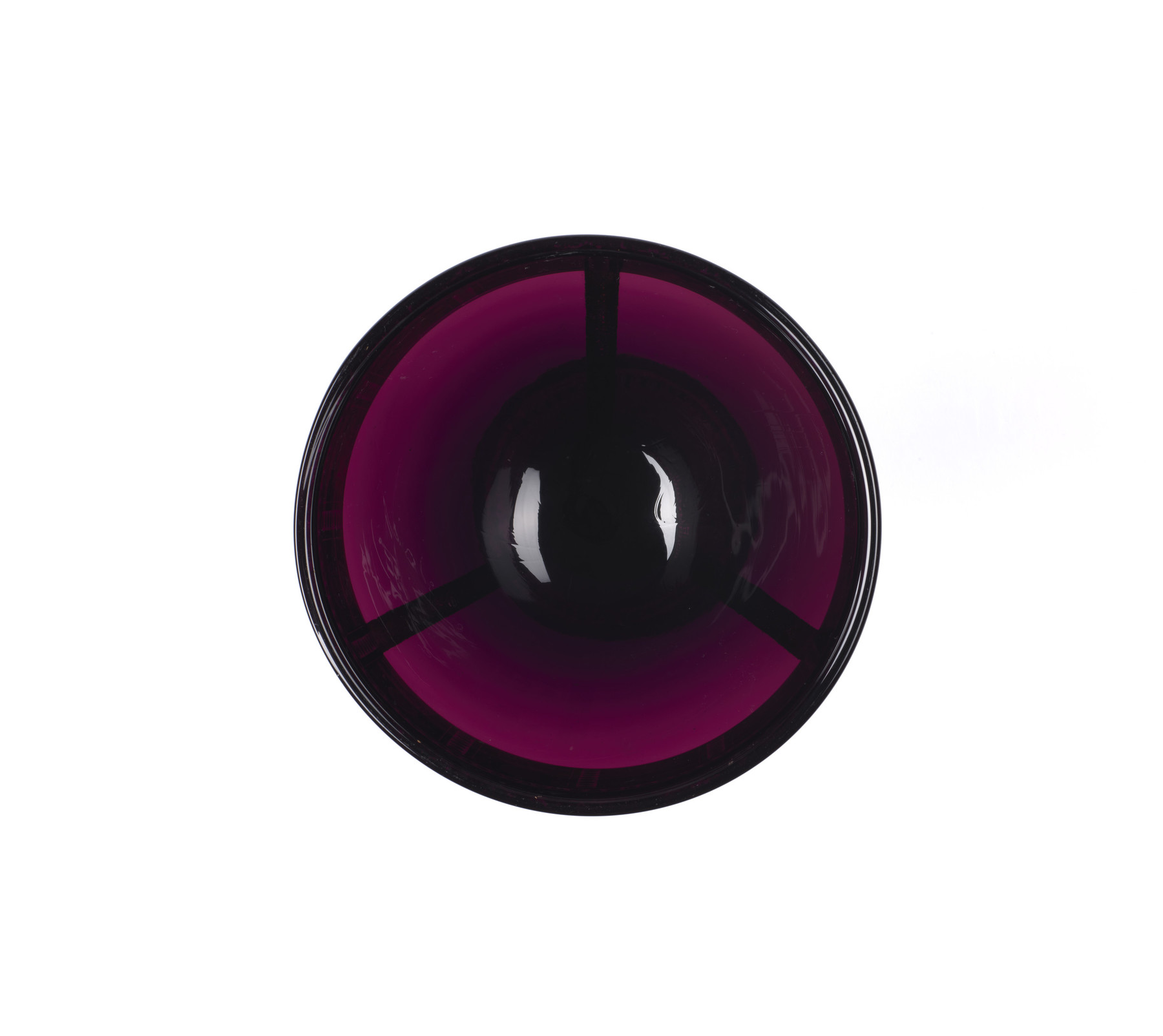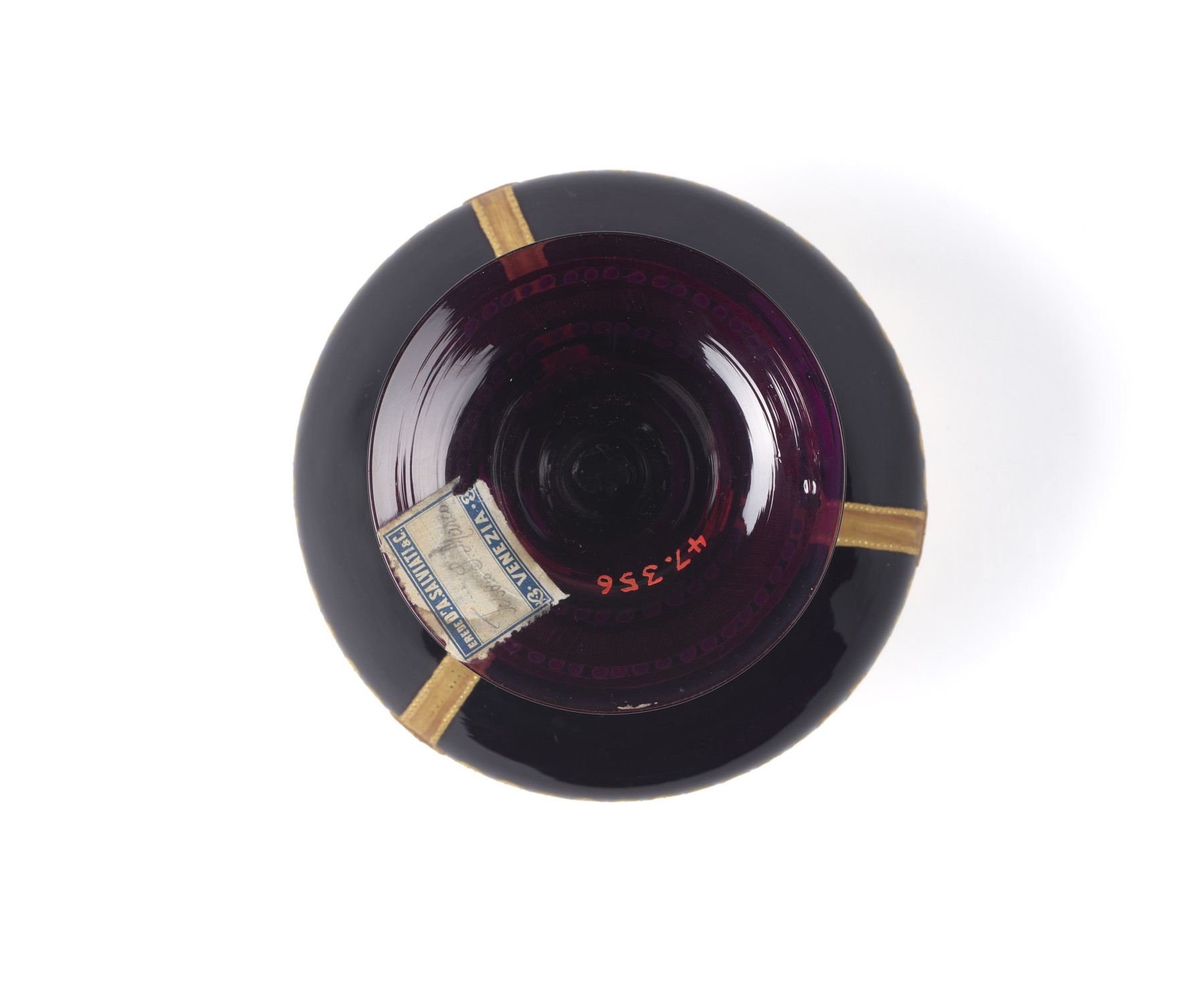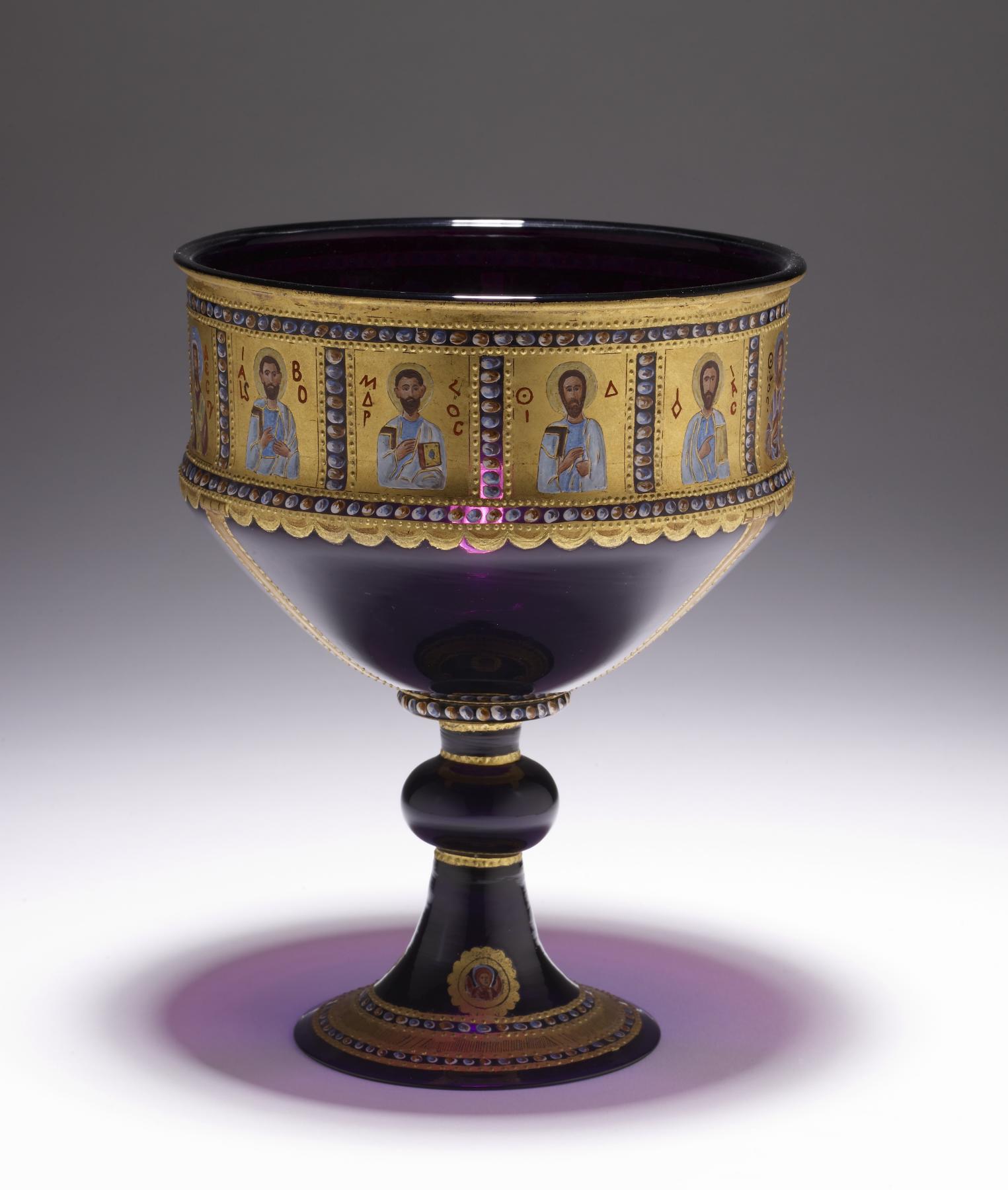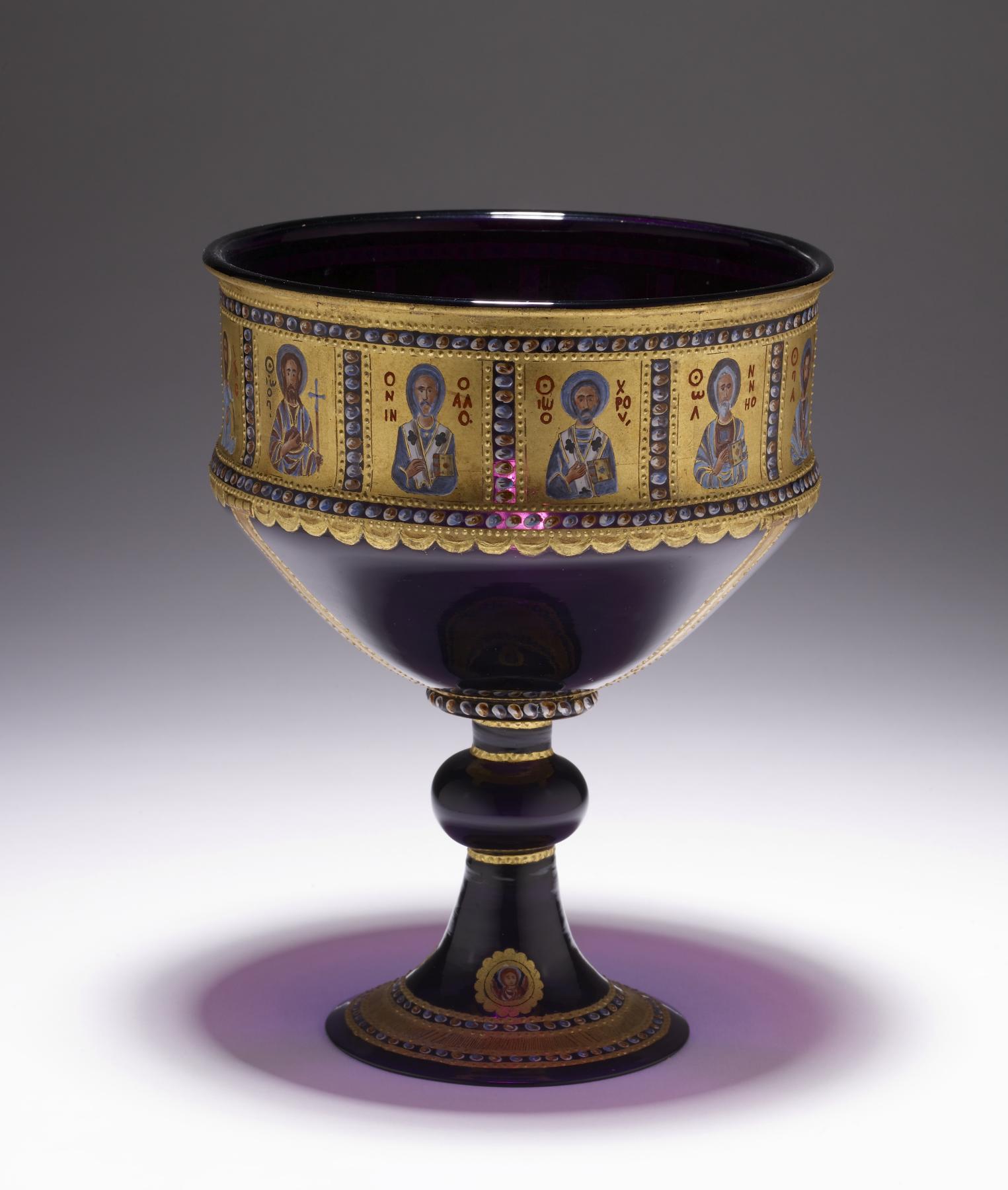Chalice
(18th and 19th Centuries )
A well-known object in the Treasury of Saint Mark's Basilica in Venice was the inspiration for this chalice. The original chalice was carved from a semiprecious stone, gilded, and covered with pearls and enamel. The two vessels are similar in appearance, but the Salviati reproduction is made from blown glass; the pearls, gold embellishments, and enameled figures are painted on the surface.
Provenance
Provenance (from the French provenir, 'to come from/forth') is the chronology of the ownership, custody, or location of a historical object. Learn more about provenance at the Walters.
Purchased by Henry Walters, Venice, 1911; by bequest to Walters Art Museum, 1931.
Exhibitions
| 2021-2023 | Sargent, Whistler, and Venetian Glass: American Artists and the Magic of Murano. Smithsonian American Art Museum, Washington; Amon Carter Museum, Fort Worth; Mystic Seaport Museum, Mystic. |
| 2007-2008 | Salviati and the Antique: Ancient Inspiration for Modern Glassmaking. The Walters Art Museum, Baltimore. |
| 1982 | Harborplace Light Street Pavilion Special Display. Harborplace, Baltimore. |
Conservation
| Date | Description | Narrative |
|---|---|---|
| 1/8/1960 | Treatment | cleaned |
Geographies
Italy, Venice (Place of Origin)
Measurements
H: 8 3/16 × Diam at rim: 6 5/16 in. (20.8 × 16.1 cm); Diam of base: 3 3/4 in. (9.6 cm)
Credit Line
Acquired by Henry Walters, 1911
Location in Museum
Not on view
Accession Number
In libraries, galleries, museums, and archives, an accession number is a unique identifier assigned to each object in the collection.
In libraries, galleries, museums, and archives, an accession number is a unique identifier assigned to each object in the collection.
47.356

